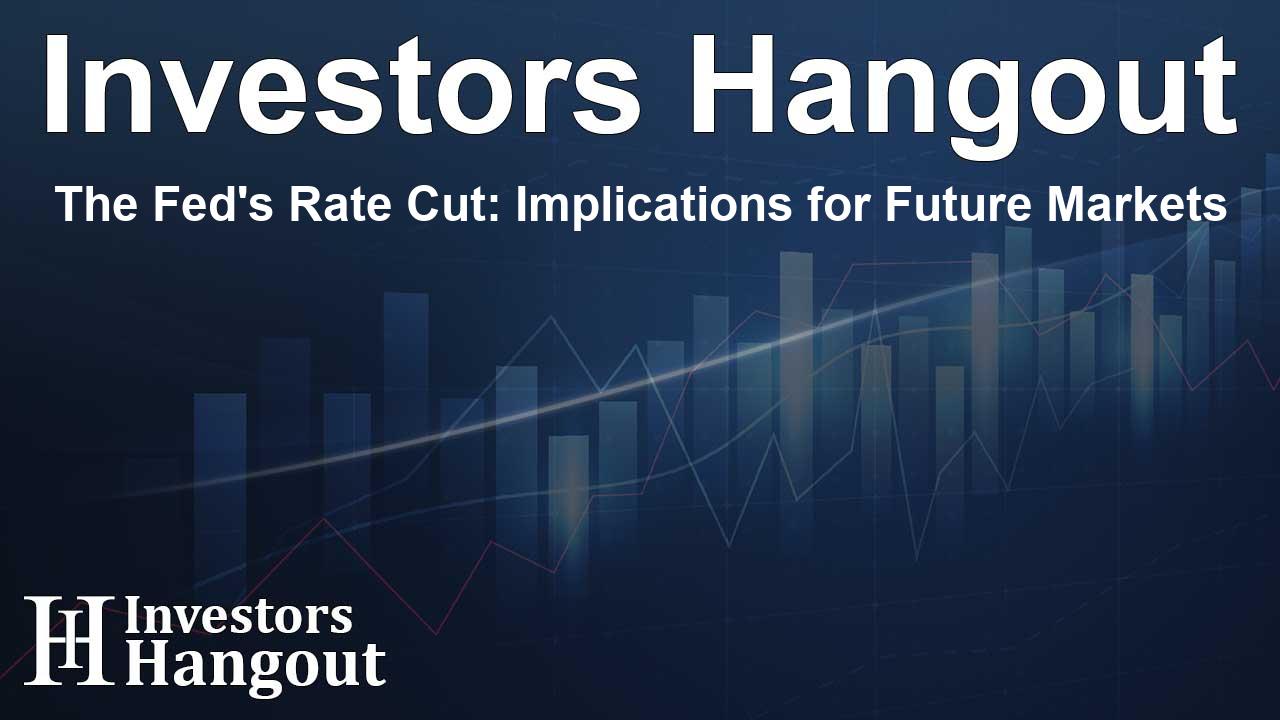The Fed's Rate Cut: Implications for Future Markets

The Fed's Rate Cut: Implications for Future Markets
As we navigate through the economic landscape of the 2020s, three potential scenarios have captured our attention. The vision of a lively Roaring 2020s, reminiscent of the 1920s, juxtaposes with the possibility of a stock market melt-up akin to the 1990s. Meanwhile, the shadows of the past remind us of the turbulent 1970s, where geopolitical upheavals caused oil prices and inflation to soar.
Our perspectives on these scenarios have remained consistent, assigning probabilities of 60% to the Roaring 2020s, 20% to the 1990s-style melt-up, and 20% to the volatile 1970s. However, the recent actions and statements from Fed Chair Jerome Powell compel us to reevaluate these odds.
The Shift in Monetary Policy
At the recent gathering in Jackson Hole, Fed Chair Powell articulated a significant shift in the central bank's approach. Once viewed as an inflation hawk, he's now signaling a shift towards prioritizing employment, a transition that has prompted a change in our outlook to 50% for a market melt-up, 30% for a continuation of growth, and 20% for inflationary challenges.
Understanding the Impacts of the Rate Cut
The decision to lower the federal funds rate by 50 basis points rather than the anticipated 25 basis points sent ripples through the financial markets. This dramatic move indicates a commitment to fostering a robust labor market while managing inflation effectively. The Fed's dot plot revealed a more profound dissent than previously thought among committee members, suggesting varied perspectives on future rate adjustments.
The Fed's Communication and Market Reaction
During his recent press conference, Powell expressed determination, stating, "We will do everything we can to maintain a strong labor market as we aim for price stability." This commitment has been welcomed by investors, who responded positively, driving stock prices to new highs. The anticipation of further rate cuts has led many to believe that we might be on the brink of a significant market resurgence, reminiscent of the 1990s.
Looking Ahead: Potential Scenarios
With the Federal Reserve signaling some long-term strategies, the outlook for financial markets looks promising. Investors are now considering how this landscape might evolve in the months to come. The prospect of the federal funds rate settling around 2.9%, the Fed's projection for the long-run neutral interest rate, hints at a stable environment conducive for growth.
The ongoing enhancement of the labor market, even in a regime of moderate growth, suggests that inflation could potentially ease toward the 2% target — a scenario that many investors optimistically embrace.
Implications for Investors
For those participating in the market, these developments unfold as a significant opportunity. The market dynamics from the 1990s taught us valuable lessons about timing, investment strategies, and diversification. As we stand at the crossroads of economic transition, it's critical for investors to stay informed and ready to adapt their strategies accordingly.
Conclusion: The Road Ahead
The actions taken by the Fed not only influence monetary policy but also set the stage for future market developments. Monitoring these rate adjustments and understanding their implications is essential for maximizing investment potential in what could be another transformative decade.
Frequently Asked Questions
What are the main scenarios for the 2020s economic outlook?
There are three scenarios: a robust growth similar to the 1920s, a stock market melt-up like the 1990s, and inflationary turbulence akin to the 1970s.
How has Jerome Powell's stance changed?
Powell has recently shifted from focusing primarily on inflation control to prioritizing employment stability, indicating a more dovish approach.
What was the recent rate cut by the Federal Reserve?
The Fed cut the federal funds rate by 50 basis points, a larger cut than previously expected.
What is the long-run neutral interest rate projected by the Fed?
The Fed anticipates the long-run neutral interest rate to settle around 2.9%.
How should investors react to these changes?
Investors should stay informed on monetary policy shifts and adapt their strategies to capitalize on potential market opportunities.
About Investors Hangout
Investors Hangout is a leading online stock forum for financial discussion and learning, offering a wide range of free tools and resources. It draws in traders of all levels, who exchange market knowledge, investigate trading tactics, and keep an eye on industry developments in real time. Featuring financial articles, stock message boards, quotes, charts, company profiles, and live news updates. Through cooperative learning and a wealth of informational resources, it helps users from novices creating their first portfolios to experts honing their techniques. Join Investors Hangout today: https://investorshangout.com/
Disclaimer: The content of this article is solely for general informational purposes only; it does not represent legal, financial, or investment advice. Investors Hangout does not offer financial advice; the author is not a licensed financial advisor. Consult a qualified advisor before making any financial or investment decisions based on this article. The author's interpretation of publicly available data shapes the opinions presented here; as a result, they should not be taken as advice to purchase, sell, or hold any securities mentioned or any other investments. The author does not guarantee the accuracy, completeness, or timeliness of any material, providing it "as is." Information and market conditions may change; past performance is not indicative of future outcomes. If any of the material offered here is inaccurate, please contact us for corrections.